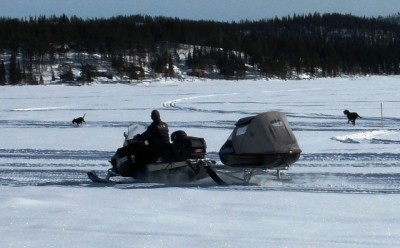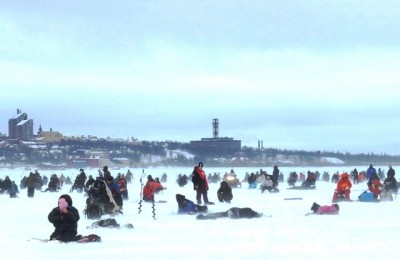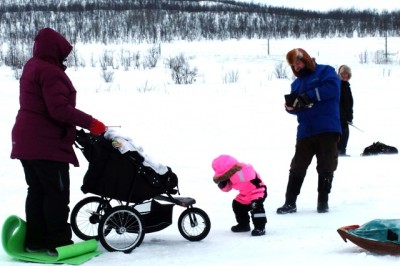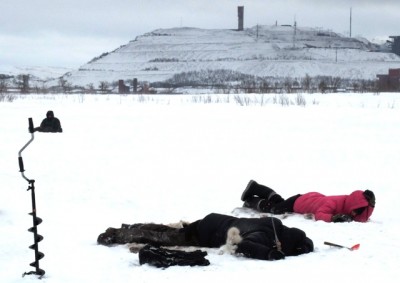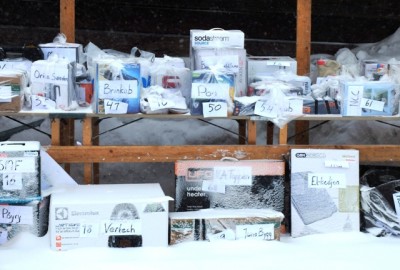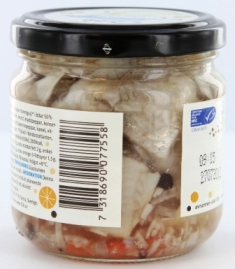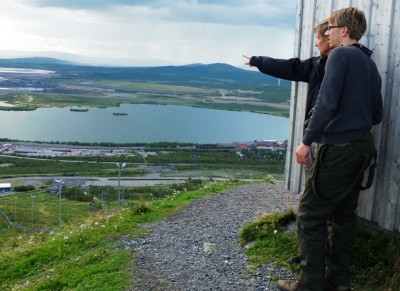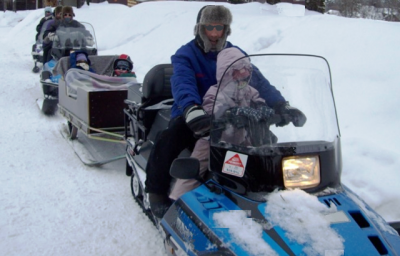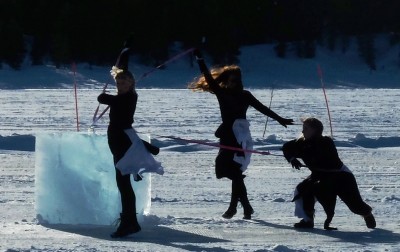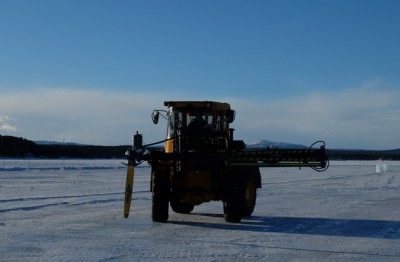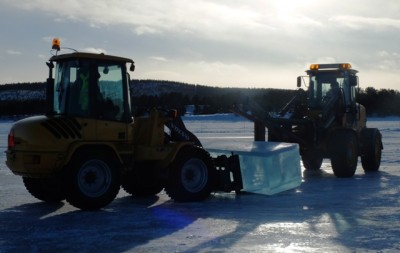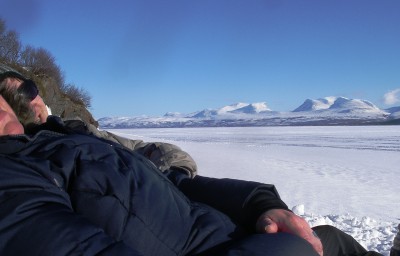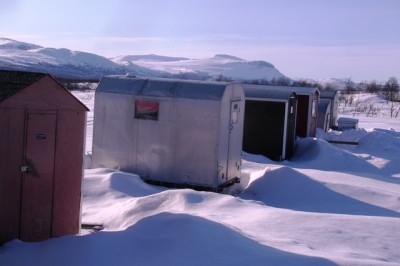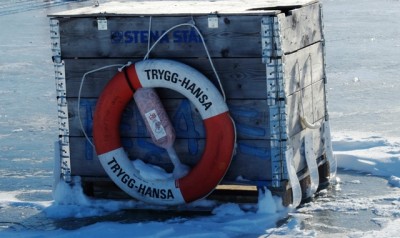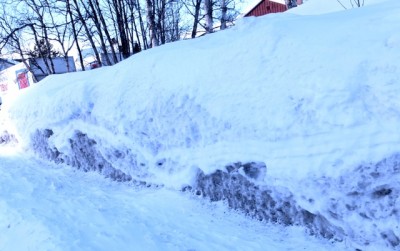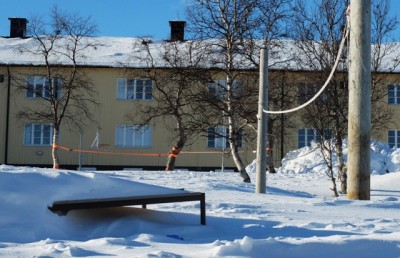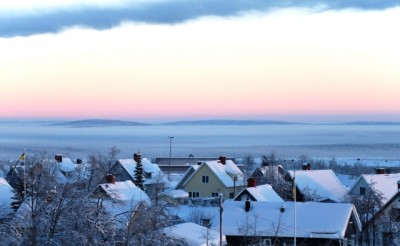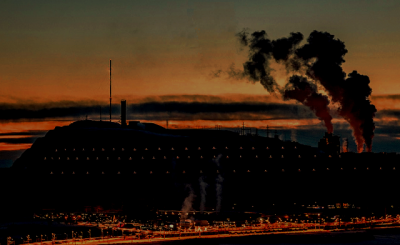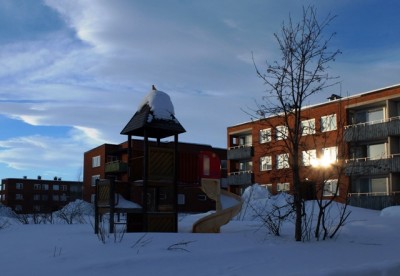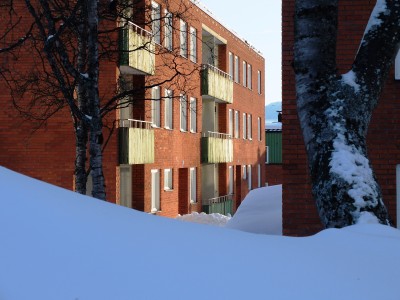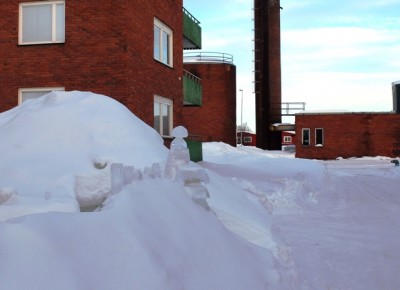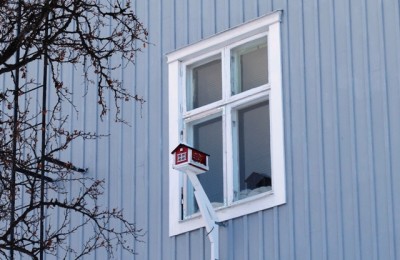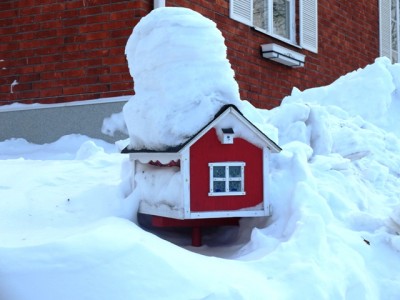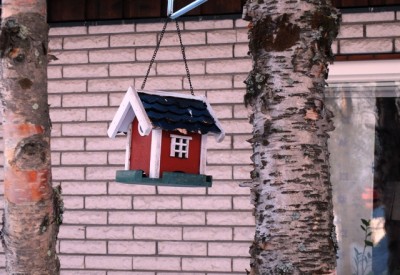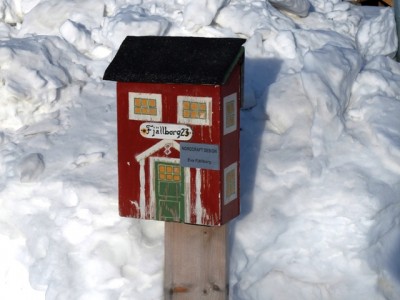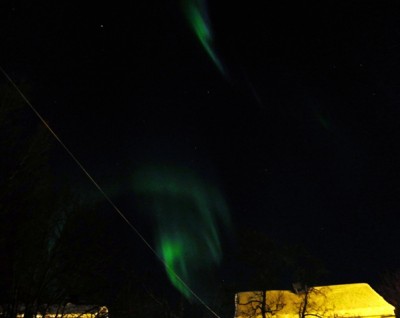
……………. Aurora viewed over our house in Kiruna
Perhaps I shouldn’t be surprised that people are competitive about their auroras. You’d think they’d just be happy that they’d seen something – many come here and don’t – but apparently just seeing them isn’t enough.
They ask – ‘was it a particularly good aurora last night?’ Or say their guide told them it was ‘the best aurora this season’. When I look at them in a disbelieving kind of way they look hurt. They want to be able to go home and tell friends and family that they saw the best aurora ever. And they want the pictures to prove it.
I’m a bit puzzled by this. I mean, it’s a matter of luck isn’t it? There’s no skill involved in seeing a ‘good aurora’ (whatever that is). Do people want to be seen as people who have good fortune? Or is it that they don’t want to look stupid for paying a lot of money to come to an uncomfortably cold place if they don’t, at least, see ‘the best aurora ever’?
Maybe it’s because I’m English. Where I’m from you’d just annoy people by boasting about your auroras. What people back home want to hear is that you had a rough time and it wasn’t worth the money (then they don’t have to bother to come themselves). If you did see good northern lights you might play it down a bit – ‘there was only a bit, you know, but it was lovely to see anyway’, and you’d smile apologetically, not wanting to rub their nose in your good fortune.
So this is something else, this my-aurora-is-better-than-your-aurora phenomenon. But because it’s all about telling others about it afterwards, you do need the photos to prove it.
We’ve been living here over three winters and we’ve never managed to take a good photo of the northern lights. We get so distracted by seeing them that we don’t want to fiddle around with the technology, and besides, we’re rubbish photographers. But mainly, it’s really hard to take good photos of the northern lights. On the one hand this is an area where the camera does lie – long exposure times make things look much brighter than they appear to the naked eye – but even when you see clear aurora it’s hard to get a decent photo. It does generally tend to be like the fisherman’s story of ‘the one that got away’.
Enter ‘Aurora Photography’ courses. Last winter they were suddenly rated as the most popular activity here and people were willingly parting with a lot of cash for them. I had no idea there were so many keen amateur photographers out there. That is, I knew there were lots of people taking photographs, but if you wanted to study photography wouldn’t it be easier (and cheaper), I reasoned, to do that in your home town, rather than travel to the arctic and pay someone there? I couldn’t understand what people thought they would learn, standing out in unfamiliar freezing conditions with a photography expert, that they couldn’t learn back at home in the warmth and comfort of a classroom in their local education institute. But I’ve always admired people keen to learn, and felt it was a more worthwhile way to spend your time than polluting the atmosphere with a snowscooter.
People started showing (off) their photos to me when they returned from the trip. Wow, their auroras were really big!
I asked them what sort of camera they had. Ah, the picture wasn’t taken with their camera – it was taken on the camera provided by the person running the course. Who had already adjusted all the settings. Who had all the gizmos prepared for taking pictures of the northern lights. Who, basically, did everything to take the photograph except actually push the button.
Then the penny dropped. Going on a three hour ‘aurora photography’ course doesn’t mean you learn about photography, but it does mean you bring back that all important evidence about the size of your auroras.
This season there are also people now taking money just to drive you out to Abisko so you can take photos – they don’t pretend to offer any photography tips, they just take you to a dark place. How does that work, given that even if their customers have good cameras and tripods, they don’t necessarily know how to take a good aurora photo (see above)?
And what about those poor people who part with all their cash on a night when the clouds hang heavily in the sky, draping the aurora displays with a dull thick grey? How are these people to be satisfied? It must be very stressful, for the tour guides. I don’t know how they manage.
We had such a night recently. There was the faintest glimmer of northern lights – probably not possible to see here, but maybe possible to see very very faintly if you were out on a dark lake. I could see it on the ‘Magnetogram’ (the graph that records activity, visible on the internet) though not in the sky. We looked sympathetically at our guests when they appeared for breakfast the following day. They were all beams – they’d seen the northern lights! Did we want to see the photos? They pulled out their iPhone and flipped through images of bright green spread across a clear starry sky. ‘You took the photos with that?’ I asked, a little jealous that visitors could achieve such amazing results on a phone when I hadn’t managed a decent image on a larger camera. ‘No,’ they replied, ‘the guide took them and gave them to us’.
Ah, that would be the guide that had been to exactly that spot many times before, on previous tours, and looked for aurora with his camera.
Maybe these images were what they saw that night, or nearly saw, through the cloud. Maybe they were images their camera could have recorded, if it had been a better one. Or maybe they came from another, clearer night, and were actually someone else’s auroras.
But who would ever know – or care? Most importantly, they were BIG.

